The fungus on the toes is a problem that bothers many.Itching, burning and stupid skin and nail type are just a small part of it.The disease is dangerous with complications that are even more difficult to cure.However, it is possible to address the problem if you are seriously treated by the treatment of fungal infection (fungus).
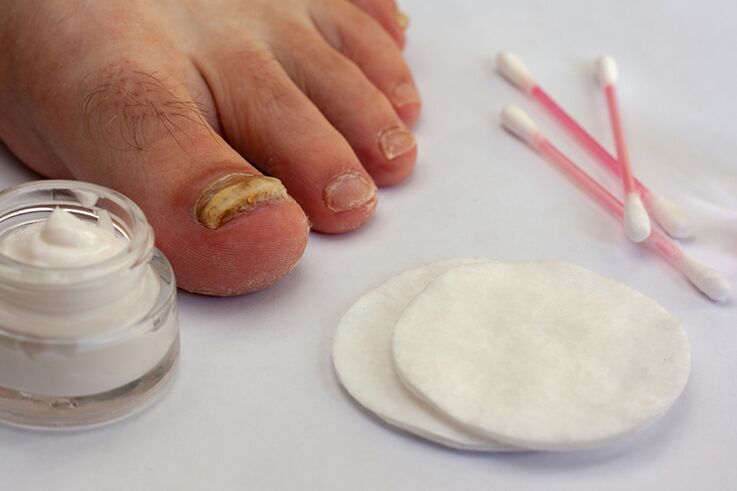
Why does the fungus appear on the legs?
Fungi are one of the types of infectious agents that affect the skin.These are difficult and extremely durable microorganisms.Therefore, fungal diseases require a serious and comprehensive approach to treatment.
Fungi have their favorite habitats on the skin.First of all, it is the skin of the feet and nails.The reason for this is understandable - the legs are usually in the shoes, in which a lot of moisture and dirt accumulates, as well as very warm.Therefore, the fungi living on the feet have many foods and a favorable microclimate for dissemination.Some types of complex fungi often affect the skin and other types of mushrooms, for example, dough and mold, prefer nail plates.Maybe at the same time infection with different types of fungus at the same time.
Contribute to the development of fungi on the fingers:
- Reduced local and general immunity.
- Poor foot hygiene.
- uncomfortable and limited shoes.
- irregular change socks or socks.
- wearing socks or storage of synthetic materials that do not pass the air.
- Regular hypothermia or feet overheating.
- Traffic disorders in the legs.
- varicose veins;
- Chronic diseases of the cardiovascular system, diabetes mellitus.
- A long course of antibiotic treatment.
- Increased sweating of the legs.
- Lack of vitamins and mineral elements in the body.
- Mechanical damage to the skin, corn, foot trauma.
- Excessive body weight on the legs.
- An irregular nail haircut on the legs.
The most important of these factors are reduced immunity and blood circulation on the legs.A decrease in immunity may occur due to different reasons.Usually these are severe chronic diseases, mainly infectious.Also, immunity can be reduced due to HIV, taking immunosuppressively, with cancer.Violation of blood circulation on the toes is no less important for blood vessels, blood, diabetes, smoking diseases.
Stop fungi that can be developed in men and women.In adults, they appear more often than in children.
Some types of fungus are constantly inhabited on the skin and activated only under adverse conditions, for example, Candida fungi.And other species are transmitted from person to person.Infection can occur when visiting the gym, bathroom, shower if at the same time a person does not use personal shoes.Also, people who put on someone else's shoes or socks, or allow other people to use them, are subject to a significant risk of infection.Often, infection occurs when using the same towels, manicure supplies, etc.Factors that increase the likelihood of infection are cuts on the surface of the skin, deformation of nail plates.
Fungus symptoms
The main symptoms of feet fungus are itching and burning.Skin redness, small bubbles, increased peeling and skin accumulation, can also be observed an unpleasant odor.The first symptoms of skin fungus can be confused with simple irritation, gratitude.
Symptoms
The fungus can affect not only the skin but also the nails.The latest variety of fungi is called onshot.The main symptom of onychomycia is a change in the structure and type of nail, its increased intelligence.The nail turns yellow, grooves and cracks appear on its surface, the nail plate thickens and deforms.If you do not cure the treatment, the nail will gradually exfoliate from the nail bed and collapse.
How the fungus looks like in your finger: photo
You should not diagnose yourself, with photos.The diagnosis should be made by a specialized dermatologist.
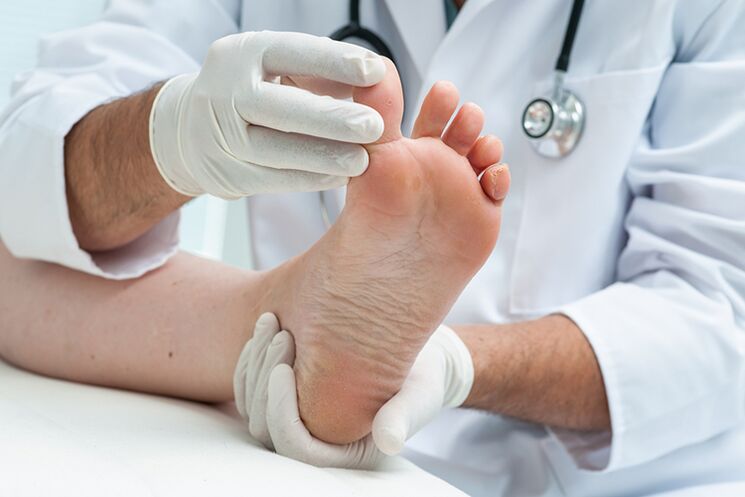
It can only determine the type of fungus.To do this, not only an external examination of the legs, but also laboratory tests of savings of skin may be needed.
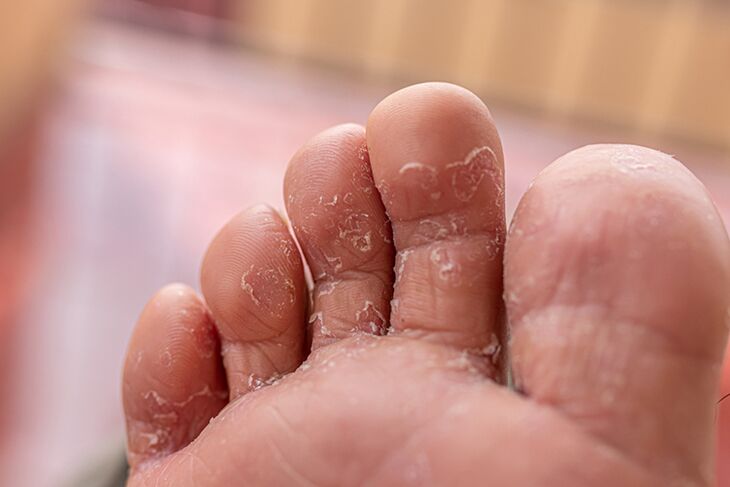
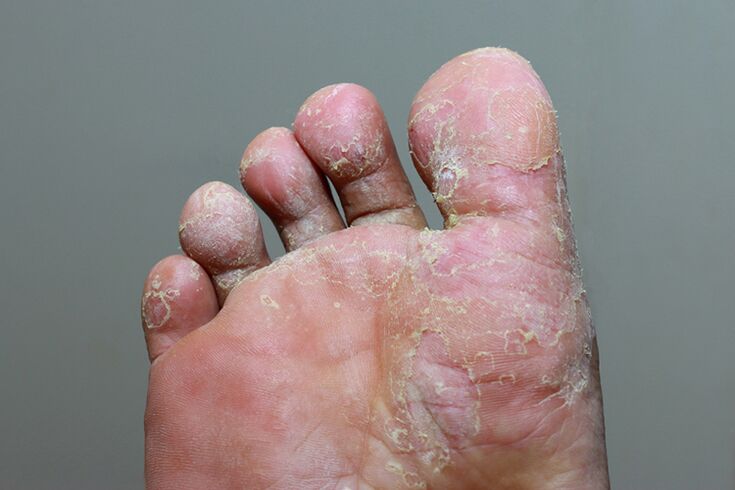
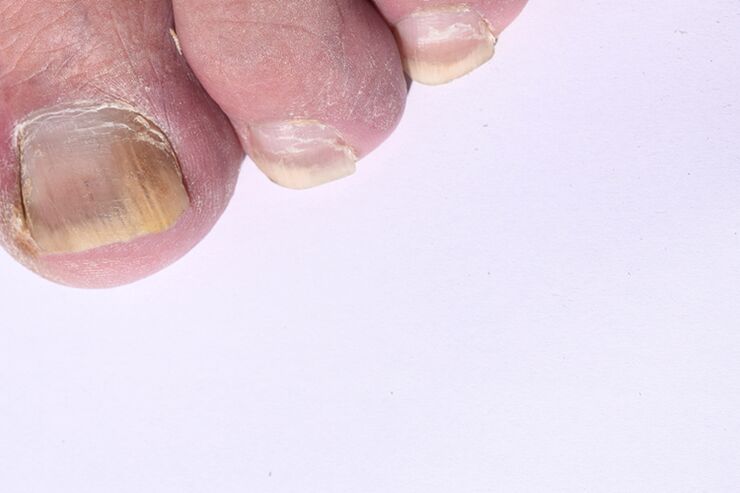
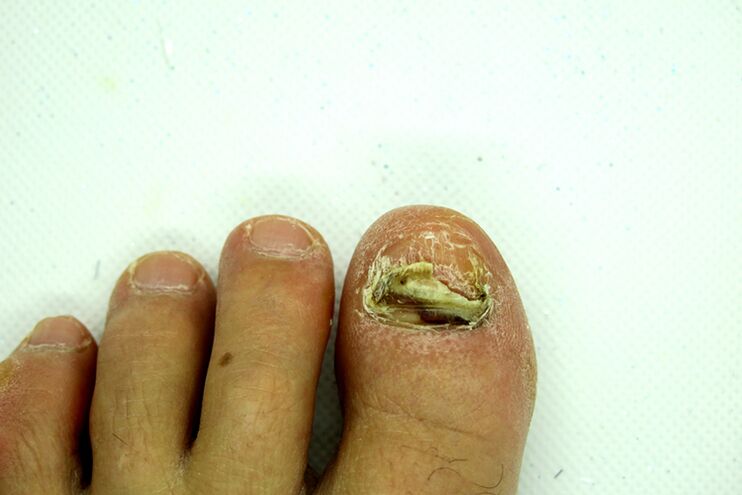
However, the presence of signs, at least remotely resembling the photos depicted in the photos, is an opportunity to worry and see a doctor.
The treatment of the disease is comprehensive and is performed at home under the supervision of a doctor.
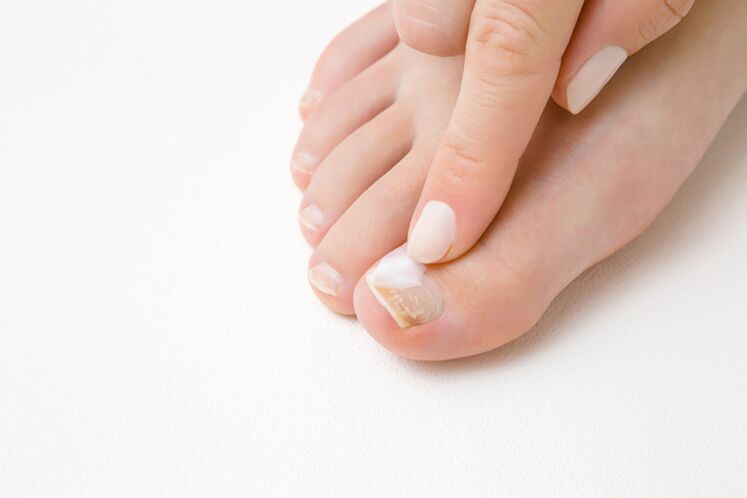
Fungus on the little finger
The fungus can affect the skin of any foot of the foot.But the little fingers on the foot are more vulnerable to the infection.The little finger in tight shoes is often compressed, due to which cracks occur on the skin and blood circulation is disturbed.With damage to the finger of the small finger, the disease develops very quickly, faster than any other nail.When infected with a little finger, the infection can quickly touch other fingers.
The fungus on the little finger is treated in the same way as the fungus in other areas of the skin.With the small finger finger, the most rational production may be the removal of its nail plate.This feature will not cause much suffering to the patient, because the nail on the little finger grows rapidly.However, while the nail does not grow again (this may take 3-4 months), it is necessary to use antifungal drugs to prevent repetition.
How to cure fungi on your fingers?
The treatment of fungus should start with the first alarming symptoms.First of all, you should contact a dermatologist for diagnosis.Before starting treatment, it is necessary to determine the fact of the presence of fungus and the type of pathogenic microorganisms.To this end, the doctor will take a scraping from the skin or cut a piece of nail (with nail damage).Blood tests, blood for sugar are donated.Foot skin microscopy should be different from:
- Other infectious skin diseases.
- allergic reactions;
- Diabetes, vascular diseases, anxiety and nerve diseases.
Local products (sprays, ointments, creams) are used to treat fungi in the legs.Only in severe cases can the doctor prescribe antimicological tablets.The most commonly used tablets with fluconazole, itraconazole, tervinafine.
The treatment is based on the use of antifungal agents.This type of drugs contains substances that kill mushrooms (fungicides) or stop reproduction (fungi).
Which antifungal factors are most commonly used:
- Clotrimazole,
- Kekotozole,
- Terbinafine,
- Nistrine,
- Mikonzole,
- Environment,
- Fluconazole.
Local drugs with antibacterial, anti -inflammatory and keratrastic properties are also used.Antibacterial agents are prescribed if the superiority occurs, that is, the bacterial attached to fungal infection.Anti -inflammatory drugs treat the unpleasant symptoms - itching and burning well.However, they do not affect the cause of the pathogenic microorganisms of the disease.Keratolytic agents include zinc, sulfur and sulfate ointment.They accelerate the regeneration of skin tissues due to the acceleration of the exfoliation of the dead skin.
For the treatment of posture fungus, baths with antiseptic agents - potassium permanganate solutions, iodine, salt, nutritional soda, boric acid are also used.Baths are better before bedtime for 20 minutes.To avoid spores infection, you must heal healthy areas of the skin with chlorhexidine, iodine, hydrogen peroxide, potassium permanganate.For treatment with Thechomicosis, antifungal varnishes are used - Loceril, Exoderil, Batrophen.These varnishes should be applied to the nail plate.
Ointments and creams should be applied to pre -water and clean skin with the frequency indicated in the product instructions.The area of application of the ointment must be slightly larger than the area of visible damage.To apply the nail to the nail plate, the nail must be steamed, the heterogeneous edges should be looted with a file and the surface of the nail should be discouraged with a solution containing alcohol.
In folk medicine, medicinal plant decoction are used to get rid of fungal in the legs - chamomile, calendula, sage, mold of St. John, Mint, Vinegar, Onion and Lemon juices.
What to do if the fungus does not pass to the finger?
The treatment of fungus is a long and difficult process.The fungal microorganisms are very durable and in a few days it is impossible to get rid of them.Sometimes it takes many months of careful treatment.At the same time, it is impossible to discontinue treatment for one day.The treatment of onychomycia cannot be completed until a new, healthy nail plate increases.
It is also important to consider other factors related to the development of the disease.Failure to comply with skin hygiene and optimal leg temperature regime can reduce all therapeutic efforts to zero.This means that it is necessary to wash the surface of the skin of the feet regularly, to avoid overheating or hypothermia.It is also important to avoid mechanical damage to the skin, excessive load on the legs, cuts and injuries.Overweight increases the pressure on the legs, so if you suffer fullness, you should consider losing weight.
If the patient is constantly wearing fungus infected shoes, then strong drugs will not help here, because the place of dead microorganisms will immediately understand news.Therefore, it is necessary to get rid of all the factors that contribute to repetition.You can't go to someone else's shoes, socks.The socks should be washed well and change regularly.The inner surface of the shoes should be well sprayed with anti -pure agents.
With persistent fungus, it is necessary to analyze the general state of health.Perhaps this will help identify the causes of weakened immunity and blood circulation on the legs.Therefore, it is possible to undergo full examination and to exclude problems with the heart, blood, boats, organs of the endocrine system.
Finally, it is possible that microorganisms simply develop resistance to the antitrust factor used.Then you will need to change the drug.Perhaps it will be systematically antimicitable on tablets.The dosage of the drugs should be selected by a dermatologist.
























